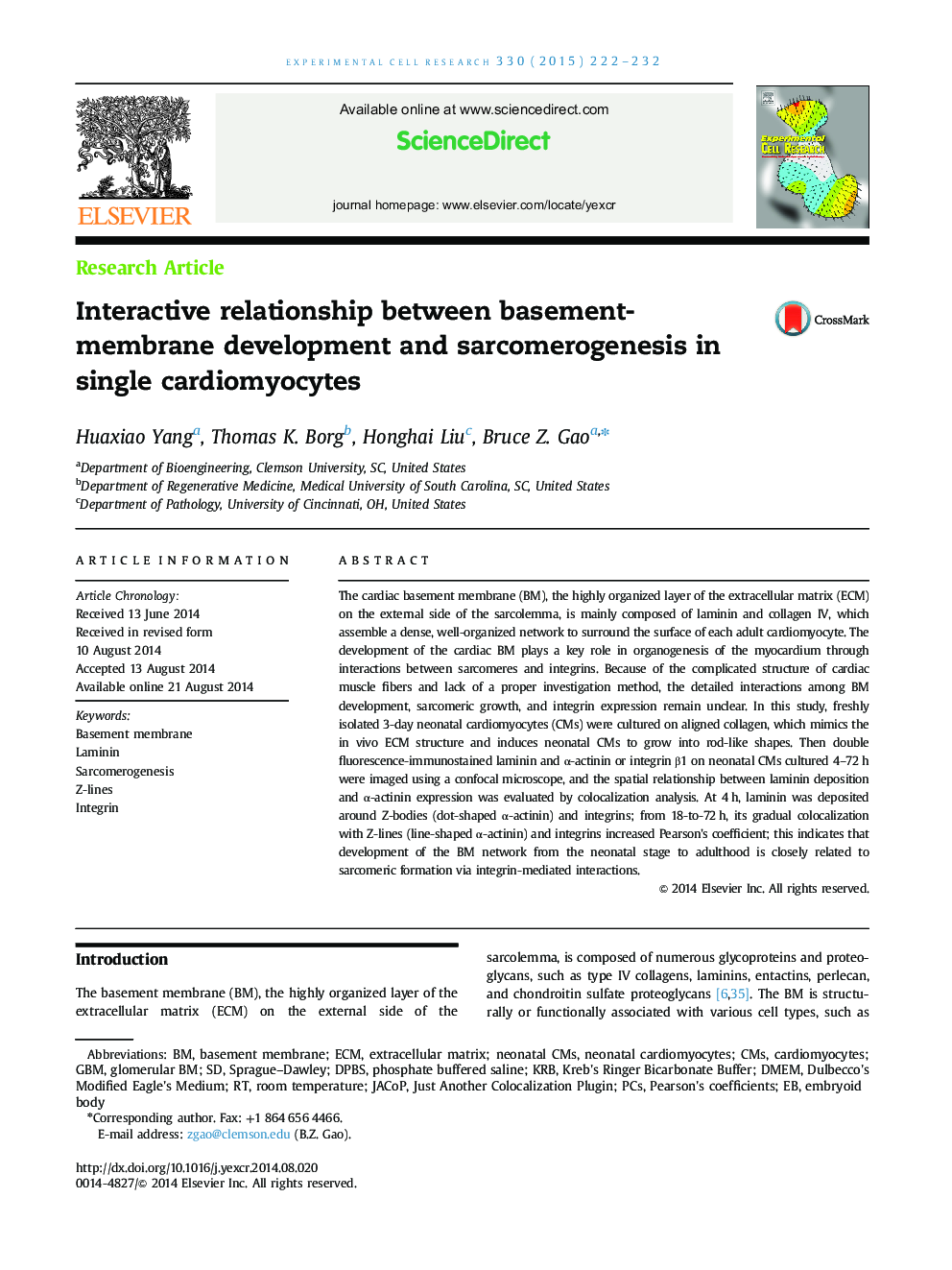| Article ID | Journal | Published Year | Pages | File Type |
|---|---|---|---|---|
| 10903980 | Experimental Cell Research | 2015 | 11 Pages |
Abstract
The cardiac basement membrane (BM), the highly organized layer of the extracellular matrix (ECM) on the external side of the sarcolemma, is mainly composed of laminin and collagen IV, which assemble a dense, well-organized network to surround the surface of each adult cardiomyocyte. The development of the cardiac BM plays a key role in organogenesis of the myocardium through interactions between sarcomeres and integrins. Because of the complicated structure of cardiac muscle fibers and lack of a proper investigation method, the detailed interactions among BM development, sarcomeric growth, and integrin expression remain unclear. In this study, freshly isolated 3-day neonatal cardiomyocytes (CMs) were cultured on aligned collagen, which mimics the in vivo ECM structure and induces neonatal CMs to grow into rod-like shapes. Then double fluorescence-immunostained laminin and α-actinin or integrin β1 on neonatal CMs cultured 4-72 h were imaged using a confocal microscope, and the spatial relationship between laminin deposition and α-actinin expression was evaluated by colocalization analysis. At 4 h, laminin was deposited around Z-bodies (dot-shaped α-actinin) and integrins; from 18-to-72 h, its gradual colocalization with Z-lines (line-shaped α-actinin) and integrins increased Pearson׳s coefficient; this indicates that development of the BM network from the neonatal stage to adulthood is closely related to sarcomeric formation via integrin-mediated interactions.
Keywords
Related Topics
Life Sciences
Biochemistry, Genetics and Molecular Biology
Cancer Research
Authors
Huaxiao Yang, Thomas K. Borg, Honghai Liu, Bruce Z. Gao,
